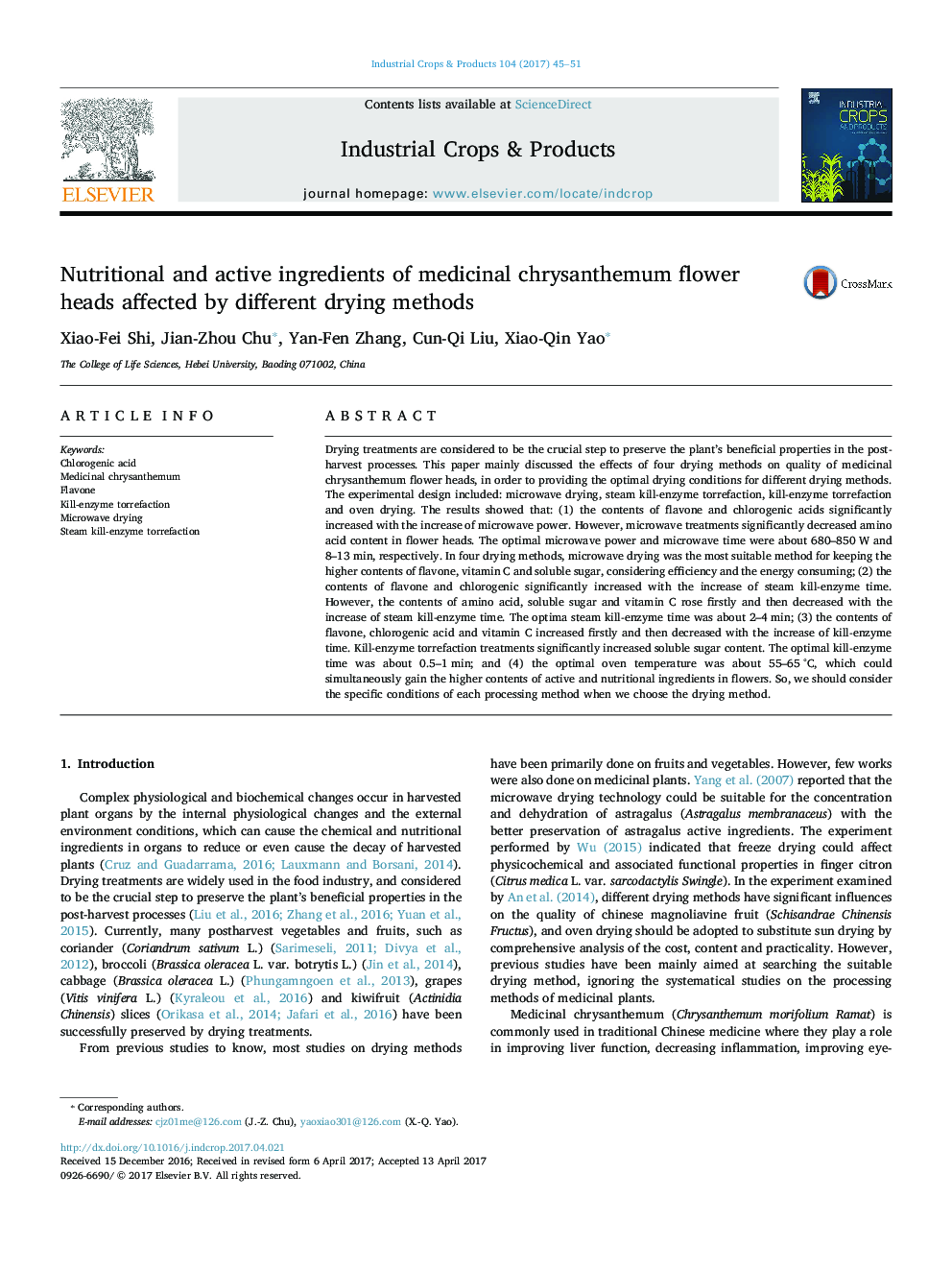| Article ID | Journal | Published Year | Pages | File Type |
|---|---|---|---|---|
| 5761779 | Industrial Crops and Products | 2017 | 7 Pages |
Abstract
Drying treatments are considered to be the crucial step to preserve the plant's beneficial properties in the post-harvest processes. This paper mainly discussed the effects of four drying methods on quality of medicinal chrysanthemum flower heads, in order to providing the optimal drying conditions for different drying methods. The experimental design included: microwave drying, steam kill-enzyme torrefaction, kill-enzyme torrefaction and oven drying. The results showed that: (1) the contents of flavone and chlorogenic acids significantly increased with the increase of microwave power. However, microwave treatments significantly decreased amino acid content in flower heads. The optimal microwave power and microwave time were about 680-850 W and 8-13 min, respectively. In four drying methods, microwave drying was the most suitable method for keeping the higher contents of flavone, vitamin C and soluble sugar, considering efficiency and the energy consuming; (2) the contents of flavone and chlorogenic significantly increased with the increase of steam kill-enzyme time. However, the contents of amino acid, soluble sugar and vitamin C rose firstly and then decreased with the increase of steam kill-enzyme time. The optima steam kill-enzyme time was about 2-4 min; (3) the contents of flavone, chlorogenic acid and vitamin C increased firstly and then decreased with the increase of kill-enzyme time. Kill-enzyme torrefaction treatments significantly increased soluble sugar content. The optimal kill-enzyme time was about 0.5-1 min; and (4) the optimal oven temperature was about 55-65 °C, which could simultaneously gain the higher contents of active and nutritional ingredients in flowers. So, we should consider the specific conditions of each processing method when we choose the drying method.
Related Topics
Life Sciences
Agricultural and Biological Sciences
Agronomy and Crop Science
Authors
Xiao-Fei Shi, Jian-Zhou Chu, Yan-Fen Zhang, Cun-Qi Liu, Xiao-Qin Yao,
